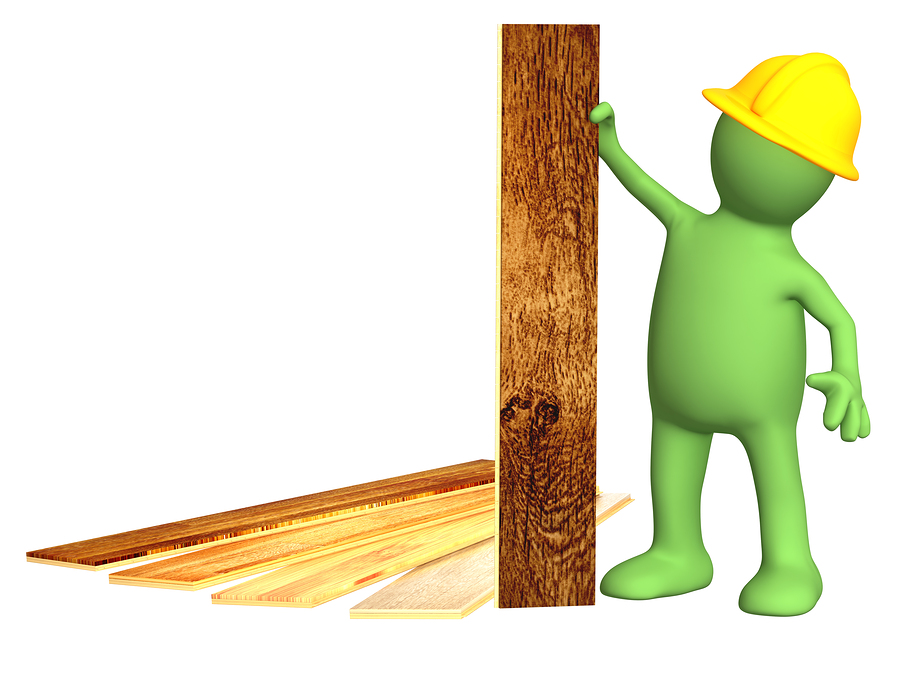If you’re like me in this political season, no matter which candidate or party you follow, one thing you know for sure – the volume is turned up LOUD, and the rhetoric is in overdrive. Like an old journalist friend used to joke, "never let the truth get in the way of a good story."
 Seems that could have been true with some recent revelations regarding the Lumber Liquidators Formaldehyde story. You may have heard that the retailer settled with the Department of Justice for $13 million, and agreed to five years on probation and a commitment to a strong internal safety and compliance program. The charges against Lumber Liquidators, which really became public as the focus of a 60 Minutes story, are because of what the DOJ said was "use of timber that was illegally logged in Far East Russia, as well as false statements on Lacey Act declarations which obfuscated the true species and source of the timber." According to the DOJ, it’s the first felony conviction related to the import or use of illegal timber, and the largest criminal fine ever under the Lacey Act, which is a conservation law aimed at protecting plants, fish, and wildlife.
Seems that could have been true with some recent revelations regarding the Lumber Liquidators Formaldehyde story. You may have heard that the retailer settled with the Department of Justice for $13 million, and agreed to five years on probation and a commitment to a strong internal safety and compliance program. The charges against Lumber Liquidators, which really became public as the focus of a 60 Minutes story, are because of what the DOJ said was "use of timber that was illegally logged in Far East Russia, as well as false statements on Lacey Act declarations which obfuscated the true species and source of the timber." According to the DOJ, it’s the first felony conviction related to the import or use of illegal timber, and the largest criminal fine ever under the Lacey Act, which is a conservation law aimed at protecting plants, fish, and wildlife.
Not to minimize that the company did sell flooring with formaldehyde levels above the nation's highest standards (in California), and did mislabel wood in China as meeting California standards, but other questions have come to light, like is the flooring safe when actually installed in a home, and how did 60 Minutes come to do their expose in the first place?
On the first question, you may be surprised at the result when Lumber Liquidators flooring was actually installed in a house and subsequently tested. The Consumer Product Safety Commission (CPSC) used a testing method to replicate "in-home exposure" and then let the Center for Disease Control (CDC) analyze the results. In a report released just last week, the CDC said, "Breathing in very high levels of formaldehyde over many years has been linked to rare nose and throat cancers in workers. Formaldehyde exposure from the tested laminate flooring would be much lower and would last for less time than the exposures linked to cancer. We estimated the risk of cancer from exposure to this flooring, and it's low."
 Covering the bases, the CDC still suggests that if consumers have symptoms, they should see their doctor. Likewise, they should limit other sources of formaldehyde exposure, like smoking. So, if real-life usage is such a short risk, then why was 60 Minutes so interested in this story? Funny you should ask, the answer to that question is also "short." According to a Bloomberg Report, the catalyst for the story, was short sellers – investors who had already bet that the Lumber Liquidators stock would fall.
Covering the bases, the CDC still suggests that if consumers have symptoms, they should see their doctor. Likewise, they should limit other sources of formaldehyde exposure, like smoking. So, if real-life usage is such a short risk, then why was 60 Minutes so interested in this story? Funny you should ask, the answer to that question is also "short." According to a Bloomberg Report, the catalyst for the story, was short sellers – investors who had already bet that the Lumber Liquidators stock would fall.
Investor Whitney Tilson, who's made some $1.4 Million shorting Lumber Liquidators, disclosed a short position in the company in 2013 and then pitched the story to 60 Minutes. Tilson was featured on the broadcast, along with a lawyer and environmental advocate funded by other short sellers. "I've seen hundreds of companies do all sorts of bad things to get their stock prices up," Tilson told 60 Minutes during the broadcast. "But this has got to be the worst."
Now it seems this is just a case of a front page headline, well overshadowing a back page correction. After the release of the CDC findings this past week, the Lumber Liquidators stock was up by almost 3 percent. After the 60 Minutes story last March, it had plummeted 70 percent.
But wait, there’s even more to the story- it seems the CDC may have made mathematical mistakes in their testing, which 60 Minutes offered in an update on its most recent broadcast. The CDC just released a statement correcting its report from earlier in February. In the statement, the CDC admits to miscalculating the ceiling height in their simulated in-home analysis of the formaldehyde risk. The mistake, according to the 60 Minutes report, was a failure by the scientists to convert feet to meters, resulting in a risk three times higher than initially thought. Currently the CDC is conducting a quality review of the indoor air model and the revised results. The new draft report will be reviewed by the CPSC, EPA, and HUD.
After correcting the measurement in the model, the possible health effects are being revised. The final results are not yet available, but are estimated to be closer to these:
• Exposure to the range of modeled levels of formaldehyde in indoor air could cause increased symptoms and other respiratory issues for people with asthma and COPD;
• Exposure to the lowest modeled levels of formaldehyde could result in eye, nose, and throat irritation for anyone; and
• The estimated risk of cancer is 6-30 cases per 100,000 people. Because of the very conservative nature of the models used in this analysis, the calculated risk is likely lower than the modeled estimate.
Speaking of the CPSC, and the work they have done with the promotional products industry, a personal note of congratulations. Neal Cohen, the CPSC small business ombudsman for the past five years, left the agency last week to go into private law practice. I had the opportunity to have dinner with Neal three years ago at an International Consumer Product Health and Safety Organization event, and I know firsthand that he worked to help small businesses, like many suppliers in our industry, understand their safety obligations. He has prepared educational presentations and been there to answer countless questions but, most importantly, he made the CPSC genuinely approachable. He even produced the "Regulatory Robot," an interactive tool specifically for small manufacturers just starting out so they know what the expectations for compliance are. Neal will definitely be missed, and not just because he was a good sport when I kidded him about his online postings from his government-issue Blackberry. I guess he can get something a little newer now, anyway. Good luck, Neal!Jeff Jacobs has been an expert in building brands and brand stewardship for more than 30 years. He’s a staunch advocate of consumer product safety and has a deep passion and belief regarding the issues surrounding compliance and corporate social responsibility. He is the executive director of Quality Certification Alliance, the industry’s only non-profit dedicated to helping suppliers provide safe and compliant products. When he's not working, you can find him traveling the world with his lovely wife, working as a volunteer Guardian ad Litem, or sometimes even enjoying a cigar at his favorite local cigar shop. Follow Jeff on Twitter, or reach out to him at jeff@qcalliance.org.